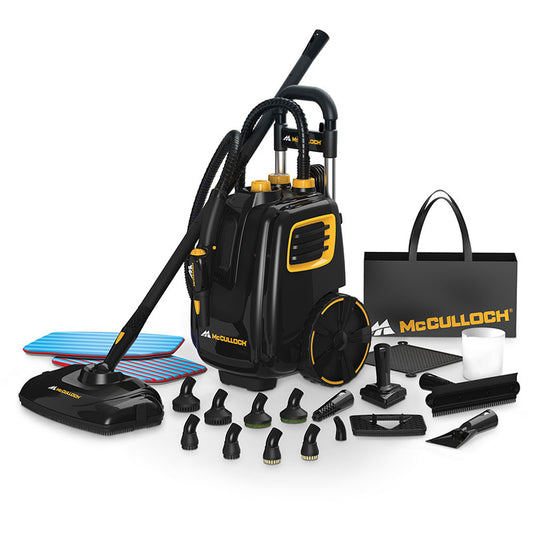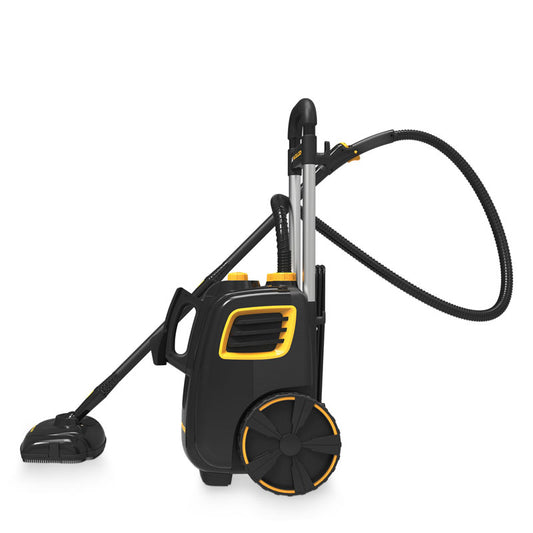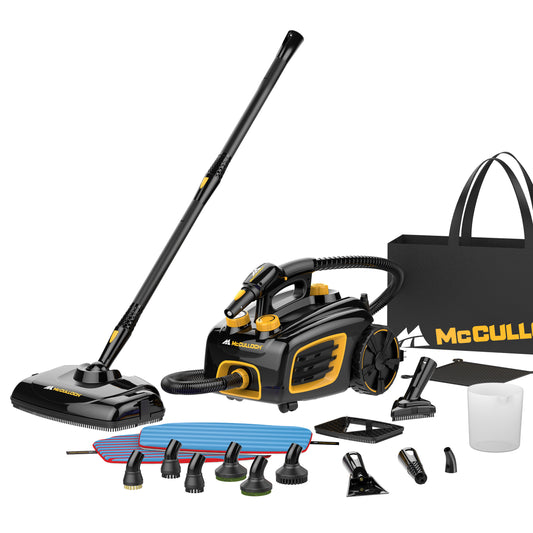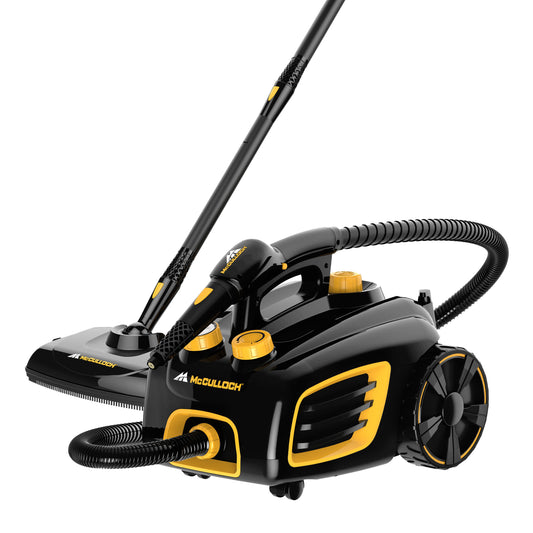
Why To Use Distilled Water In Your Steam Cleaner
Share
Not all water is created equal.
Steam cleaning is an incredibly efficient and effective method of cleaning that is becoming more and more popular in our increasingly hygiene focused lives.
These devices heat up water to 100°C - hot enough to create the steam needed to blast away dirt, grease and grime, killing bacteria across almost every surface.
Apart from its power, versatility and 23 included attachments, another benefit of McCulloch’s steam cleaners is that they require only water - no chemicals needed. With a 1.9L tank, this allows for uninterrupted cleaning, making it even more efficient.
Adding water to the unit (and using it) is quite simple - but what type of water should you use? It’s a question that probably won’t cross your mind, but it’s one worth discussing.
Tap vs Distilled - What’s The Difference?
For a lot of us, the kitchen tap is our go to source of water.
What a lot of people don’t know however is that tap water actually contains a range of minerals like calcium, magnesium and potassium, which are good for us in the available quantities.
Distilled water on the other hand is a type of water that’s considered the closest you can get to its “purest” form. Compared with tap, filtered or purified, distilled water goes through a specific process that sets it apart from other types of H2O.
During the distillation process, water is boiled into steam and then cooled to return to a liquid state. When this happens, all the impurities and minerals contained in other types of water are removed, leaving you with nothing more than Hydrogen and Oxygen in their purest form. Both forms of water are completely safe to drink, but distilled water might taste a bit bland, and is best bought from the supermarket rather than made at home.
So, when it comes to filling up your steam cleaner, which type of water is the best choice? For the best results, the winner is definitely distilled.
Mineral Build Up
Due to its mineral content, tap water is not recommended as the go-to water source for your steam cleaner.
Can it still be used? Of course! But over time, these minerals can build up in the areas behind each nozzle or attachment, and can even cause corrosion as a result of long-term use.
Using distilled water can help prevent corrosion and mineral build up, because it doesn’t actually contain any minerals! For this reason, it’s the preferred option to choose when you’re filling up your steam cleaner.
Mineral Removal & Maintenance
Like we said, tap water can still be used, but it’s wise to undergo some regular maintenance to remove any mineral build up in the device. In fact, it’s good practice to do this regardless of the water you’re using.
Follow these steps to properly descale your steam cleaner:
1. Turn the unit “Off” and unplug the power cord.
2. Allow the unit to completely cool (at least 30 minutes).
3. Press and hold Steam Trigger to release all remaining steam.
4. Remove all accessories from the unit.
5. Carefully remove Reservoir Cap.
6. Drain water from Reservoir into a sink or tub.
7. Using Measuring Cup, measure 8 oz. (237 ml.) of vinegar.
8. Slowly pour vinegar into Reservoir.
9. Allow to stand for 40 minutes.
10. Drain vinegar from Reservoir.
11. Rinse Reservoir with fresh water, drain and repeat until vinegar odor dissipates.
A Long Life
You’re probably wondering why distilled water is really necessary, especially if you can simply just use normal tap water and regularly clean the steam cleaner to remove mineral build up.
Preventing this build up as much as possible in the first place is the key to extending the life of the unit.
The other thing to take into account is that the water put into the unit when you’re getting ready to steam clean (or if you’re topping up again during a big clean) might not always get used, meaning this water will sit there in the tank until the next top up.
In this situation, if you’re using tap water these minerals will linger in the steam cleaner tank as the water sits there - long term, this can add to the corrosion of the unit and even attract bacteria. Making the switch to distilled water will save you a headache in the long run, and keep your steam cleaner running in tip-top condition.
Conclusion
Steam cleaners are designed to be powerful and long lasting devices.
They can be used to effectively clean almost any surface, and with 23 attachments included in the box with purchase of the steam cleaner it’s an incredibly versatile device. When you add on the fact that no chemicals are needed, this and it’s versatility will save you money in the long run.
Switching to distilled water will add to how long your steam cleaner will be able to run for, keeping it running smoothly for years to come.
Follow McCulloch on Instagram & Facebook to stay up to date with the latest in steam cleaning. For How-To’s and Maintenance Guides, check out our Blog on our website.




